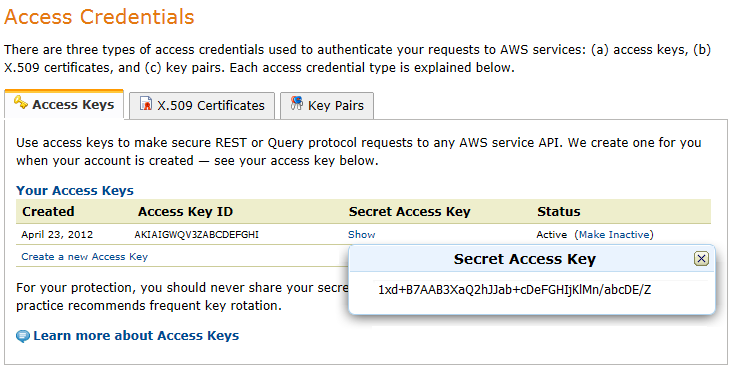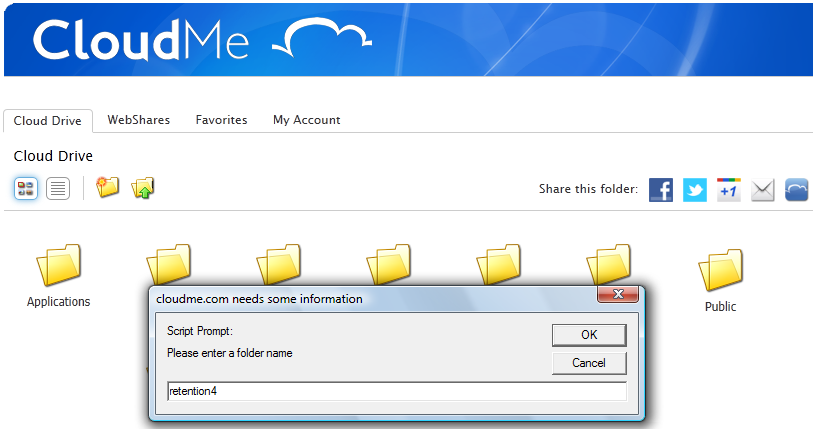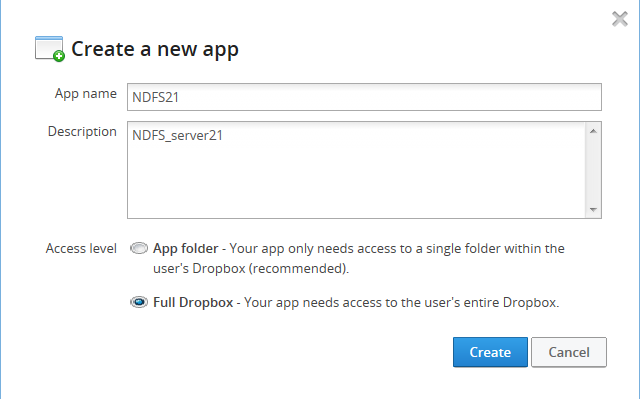11.2 Setting Up Cloud Access Credentials and Folders for Your Cloud Storage Provider
Before you can use cloud storage as the secondary location in a retention pair, you must set up the cloud storage with any of the supported cloud providers. You can use the root of the cloud storage area, or create subfolders to use as secondary locations in retention pairs. Use the cloud provider’s Web interface to create subfolders in the account, as desired. Ensure that you have your access credentials when you set up the cloud account instance on the Dynamic File Services server. If you want to use subfolders as secondary locations, you must create them before you attempt to create the retention pair.
The following sections identify the cloud access credentials that are required by each of the supported cloud providers, and information about how to set up folders for that provider.
11.2.1 Setting Up Cloud Storage for Amazon S3
For each cloud account instance that you set up for your Amazon Simple Storage Service (Amazon S3) cloud storage, Dynamic File Services requires the following authentication credentials:
-
Cloud access key ID
-
Cloud secret access key
-
Bucket name
-
Region name
The access key ID and secret access key that Dynamic File Services uses to authenticate to Amazon S3 are your Amazon Web Services (AWS) identifiers.
A bucket is a container for objects stored in Amazon S3. The secondary path of a retention pair can be at the root of a bucket, or it can be on a folder in the bucket. You can access multiple buckets in a single Amazon S3 cloud storage service by creating a cloud account instance in Dynamic File Services for each bucket. A cloud account for a single bucket can use unique paths in the bucket for each retention pair.
It is possible that your Amazon S3 cloud storage account can have one access key ID and more than one secret access key so that the account can be accessed by other administrator users, to whom the subscriber wants to give access permissions. If multiple Amazon S3 users can access the same bucket, you can specify the access credentials (key ID and secret key) for only one of those users in a given cloud account instance in Dynamic File Services. Only the folders created with the specified access credentials are visible when Dynamic File Services accesses data on your behalf.
Use the following procedures to set up Amazon S3 cloud storage:
Getting the Access Credentials for Amazon S3
To find your AWS identifiers:
-
Log in to your Amazon S3 account by providing the email address and password for Amazon S3 account, then clicking .
If you have multiple users set up in the Amazon S3 account, ensure that you log in as the user identity that matches the access credentials that you provide to Dynamic File Services.
-
From the Account page, select in the left panel, then scroll down to view your

-
Click to view the .
-
Make a note of the and the .
These are the access credentials you need to set up a cloud account in Dynamic File Services.
Creating a Bucket and Folder in Amazon S3
In a retention pair, the secondary path can be at the root of a bucket, or it can be on a subfolder in the bucket. The bucket must exist in Amazon S3 before you can set up a cloud account for it in Dynamic File Services. A subfolder (if used) must exist in Amazon S3 before you can use it as a secondary path in a retention pair.
You use the Amazon Web Services (AWS) Management Console to create buckets and folders (if desired) in your Amazon S3 cloud storage account, as described in the following procedure:
-
Log in to your Amazon S3 account by providing the email address and password for Amazon S3 account, then clicking .
If you have multiple users set up in the Amazon S3 account, ensure that you log in as the user identity that matches the access credentials that you provide to Dynamic File Services.
-
In the left panel, click .
-
Select the tab.
-
Create one or more buckets in your Amazon S3 account.
-
In the left panel, click , then specify a unique name for the bucket.
The bucket name must be unique across all existing bucket names in Amazon S3. One way to do that is to prefix your bucket names with your company’s name, such as XYZ-NDFS_TEST1.

-
Select the region from the drop-down list, such as .
The bucket’s assigned region controls the geographical or political region where Amazon S3 physically stores your files in the cloud. You can choose a region to optimize for latency, minimize costs, or address regulatory requirements. For information, see the Amazon S3 Working with Amazon S3 Buckets documentation.
-
Click .
-
(Optional) Repeat Step 4.a to Step 4.c to create additional buckets.
-
-
(Optional) Create one or more folders in a bucket.
11.2.2 Setting Up Cloud Storage for CloudMe
CloudMe requires the following authentication credentials:
-
Cloud account name
-
Cloud account password
Use your CloudMe account user name and password.
To create one or more folders in your CloudMe account:
-
Log in to your CloudMe account, then click the tab.
-
Click the icon, specify a name for the folder, then click .

11.2.3 Setting Up Cloud Storage for Dropbox
Dropbox requires the following authentication credentials:
-
Cloud application key
-
Cloud application secret
-
Cloud application secret token (retrieved by Dynamic File Services)
Dropbox uses a two-phase OAuth authorization process to establish a connection between Dynamic File Services and your Dropbox account. When you set up the cloud account in Dynamic File Services, the Cloud Account Wizard uses the application key and secret to retrieve a secret token. The token is part of a URL where you go to confirm the access authorization for Dynamic File Services.
To get an OAuth application key and secret for Dynamic File Services to use:
-
Go to Dropbox Developers, then log in to your Dropbox account.
You can also log in, scroll to the bottom of the page, then click to go to the API Home page.

-
In the left panel, click .

-
On the My Apps page, click , then set up an application entry for Dynamic File Services, granting it access.

-
Make a note of the and that are created for Dynamic File Services.

-
(Optional) Create one or more folders in the Dropbox account. On your account home page, click the icon, then specify a name for the folder.

